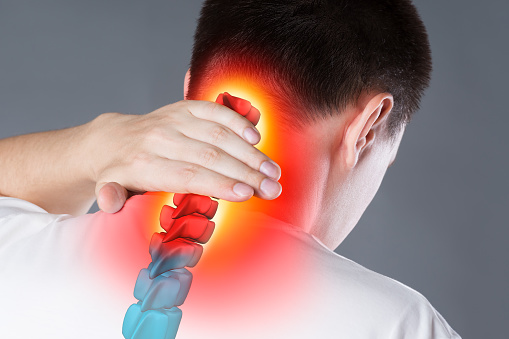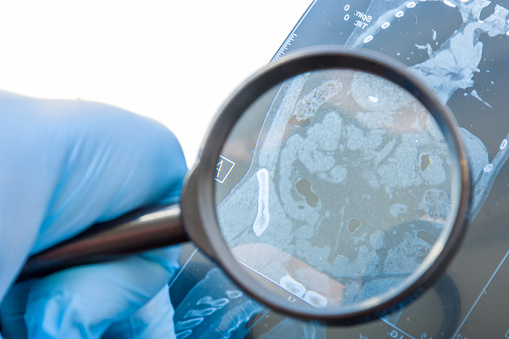The progress of treatment depends on the severity of the degenerative disc disease (DDD) and the patient’s ability to function and live a normal life. Severe cases will require a more comprehensive treatment program and lifestyle changes. Treatment can help reduce pain and allow patients to perform rehabilitative exercises. Pain relief will reduce inflammation and instability.
Exercises
One of the most important things to do when living with degenerative disc disease in the neck is to find exercises that are safe. These exercises should be low-impact and should not cause any strain on the neck or lower back. Heavy weight-lifting exercises, such as power cleans and deadlifts, must be avoided. Instead, seek out high-repetition movements that do not place as much stress on the spine. Dumbbell lunges, for example, are a great choice because they work the leg muscles and are low-impact.
While exercising is a great way to relieve neck pain, it is important to consult a medical professional before starting any new program. Some exercise programs will worsen symptoms and damage the neck. In addition to consulting your doctor, physical therapists can also provide advice on the right types of exercises to do. Generally, exercise programs are designed to increase strength and flexibility and condition the body through aerobic activity.
While degenerative disc disease may not cause severe pain, it can lead to severe disability. In addition to low back pain, degenerative disc disease in the neck may cause pain in the leg, buttocks, or arm. While there is no cure for this condition, nonsurgical treatments can help to slow the progression and relieve pain.
Diet
Whether you’re diagnosed with degenerative disc disease in the neck, or are already dealing with it, the most important thing you can do for your health is to make sure you’re eating a balanced diet. A healthy diet can help prevent degenerative disc disease, and it can also help you maintain a healthy weight. This will help keep your discs in good shape and reduce your stress on your spine. You should also aim to eat plenty of fruits and vegetables, as they are packed with vitamins and minerals that promote good health.
Drinking plenty of water is an important way to keep your spinal discs healthy. You should drink several glasses of water throughout the day, and avoid caffeinated drinks. Caffeinated beverages, including coffee and certain teas, are not healthy for the spine, because they dehydrate the body. Also, try to avoid alcohol and nicotine, which are both depressants and interfere with the nutrition that spinal discs need.
The first step is to make sure you understand your degenerative disc disease symptoms. You should also keep in mind that degenerative disc disease does not always produce pain. Sometimes, the symptoms of degenerative disc disease can be intermittent, or even move down into the low back. This makes it essential to educate yourself on the causes and possible treatments.
X-rays
If you have persistent arm or neck pain, your doctor may order a neck x-ray. This is because the ligaments and muscles of the neck are particularly susceptible to injury. An accident involving a sudden jerk of the head, also known as whiplash, can cause a serious injury to the neck, and can even damage the spinal cord.
Degenerative disc disease in the neck may be characterized by various findings on X-rays. One common finding is a decrease in the range of motion in the neck. Another common symptom of degenerative disc disease is neck pain that is not accompanied by arm pain. The physical findings of cervical degenerative disc disease are typically nonspecific. Patients with severe pain may show cervical tenderness and decreased range of motion, but special tests are usually negative.
X-rays can also detect the presence of degenerative changes in the cervical spine. In some cases, these changes can indicate the presence of symptomatic disc herniation. X-rays can also reveal the presence of bone spurs around the vertebral bodies. These bone spurs, called osteophytes, can indicate that the disc has collapsed. As the disc collapses, the space between the vertebrae decreases, and the space for the nerve roots decreases as well.
Magnetic resonance imaging
Magnetic resonance imaging can be useful for detecting degenerative disc disease in the neck. The images can show abnormalities at various levels of the cervical spine, such as a narrowing of the disc space or a loss of signal intensity. The images can also identify traumatic disc injury.
The study found that the frequency of abnormal findings increased with age. The most common findings were disc bulge and spondylodegenerative changes of the lower vertebral segments. The frequency of degenerative changes was highest in the C5-C6 vertebrae, followed by discs in the C6-C7 regions. Most patients had abnormal findings in only one disc, and only three patients had findings at all seven cervical discs.
The MRIs were provided by five hospitals collaborating with The Spine Centre, using 1.5-T field strength. The majority of the images were sagittal T1-weighted sequences, while axial T2 sequences were available in 82% of the cases.
The MRI procedure is performed in a hospital or outpatient setting. Different doctors perform MRI in different ways. Patients are required to remove any metal objects and wear hospital gowns for the test.
Physical exam
The first step toward effective treatment is diagnosis, and a physical exam can help determine the severity of degenerative disc disease in the neck and back. During your exam, your doctor will evaluate your spine’s flexibility and range of motion. He or she will also ask you about your pain and if it limits your activities. Together, you can explore treatment options that may be appropriate for you. These options may change as your condition progresses.
A physical exam may include palpation of the neck and testing range of motion. The doctor may also perform certain movements to assess whether pain increases with these movements. Imaging studies may also be helpful in determining whether your pain is related to neurologic symptoms. MRI is the most effective imaging test to determine if degenerative disc disease has spread from the cervical spine to the other parts of the body.
A physical exam will also assess your pain, mobility, and reflexes. It may also be helpful to get a CT scan, which uses radio waves and magnetic fields to provide a detailed picture of the spine. This type of scan can detect spinal damage and herniation.
Herbal therapies
Herbal therapies for degenerative disc disease in your neck are a natural way to reduce pain and improve your condition. They can also protect your discs from degeneration and inflammation. Degenerative disc disease is an age-related condition that can result in pain and weakness of the affected region of the spinal cord. These treatments may include herbal supplements, dietary changes, and exercise. Discs in your spine begin to degenerate over time as you age, losing their mass, elasticity, and fluidity. These discs are no longer able to cushion your body from pressure on your nerves, which can lead to degenerative disc disease.
The symptoms of degenerative disc disease usually worsen as you age. This happens because discs lose their firmness and start to collapse on top of each other. The compression of the nerves can lead to pain radiating down the neck. Discs can also become inflamed, causing severe muscle tension and tenderness in the neck. In addition, inflammation on nerve roots can lead to numbness and pain throughout the affected area.
Acupuncture for degenerative disc disease in the neck can be very beneficial. In this treatment method, the practitioner inserts needles at specific points in the neck, called acupuncture points. Acupuncture will help release endorphins and serotonin, which help alleviate pain. Other herbal therapies for degenerative disc disease in the neck include Devil’s Claw and White Willow Bark, which have anti-inflammatory properties.
A person who lives with degenerative disc disease in the neck can qualify for Social Security disability benefits. The condition can prevent a person from performing the most basic tasks in his or her job, including sitting, standing, walking, lifting, and carrying objects. In addition, it can affect someone’s ability to understand and carry out simple instructions. SSA will also consider the condition’s severity, as well as any other physical or mental conditions.
To qualify for disability benefits, the applicant must show that they can no longer do the same type of work that they were doing prior to the injury. The Social Security Administration will likely want to see medical records from a physician or a medical practitioner that were obtained prior to the disability. However, a diagnosis from a physical therapist or chiropractor is not enough. Social Security officials will prefer a diagnosis from an orthopedist.
In addition to the medical requirements, the person’s work history will be taken into account. The applicant must have worked for at least five years in order to qualify for disability benefits. A disability that is not listed on the list may still qualify as a disability, but the applicant must prove that they are no longer able to perform a job.



